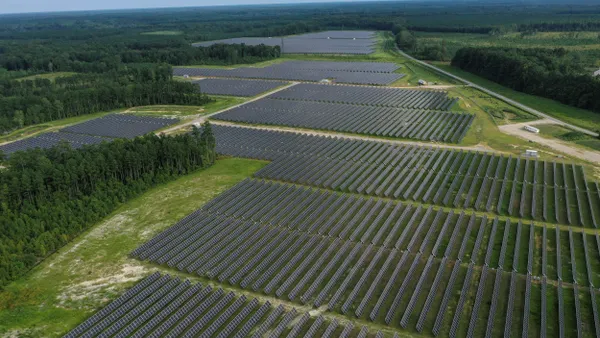The following is a contributed article by Ed Smeloff, senior director of grid integration at Vote Solar.
Less than 18 months ago, California passed SB 100, historic legislation that set the goal of eliminating greenhouse gas (GHG) emissions from the electric sector in California by 2045. Now, the California Public Utilities Commission is facing a decision on how to put the state on the path to meet that ambitious goal in its Integrated Resource Planning proceeding.
Unfortunately, it appears that the CPUC, at its upcoming March 26 business meeting, may adopt a greenhouse gas emissions target for 2030 that defers emissions-critical, near-term decisions and fails to put the state on a trajectory to achieve its climate goals.
In selecting a GHG reduction goal for 2030, the Commission staff is recommending a stay-the-course, 46 million metric ton (MMT) target, the same target the Commission used before the passage of SB 100. That target and the accompanying Reference System Portfolio will put California far behind the curve in 2030 when electricity demand is expected to accelerate due to growth of electric vehicles and electrification of other sectors of the economy. The Reference System Portfolio is also seriously flawed because it fails to consider or model low cost hybrid resources, like solar paired with battery storage, as new candidate resources that should be procured.
With the risk of catastrophic wildfires and other climate disasters increasing, California cannot afford delays in implementing SB 100. Vote Solar and many other parties to the Commission’s Integrated Resource Planning proceeding have called on the Commission to adopt a significantly lower 2030 target of 30 MMT, which was previously modeled by the Commission staff and, if adopted, will provide much more confidence that California can get to the zero carbon emissions goal by 2045.
Adopting a 30 MMT target will ensure that the state’s utilities and other electric service providers identify and develop the clean energy resources required to meet California’s climate goals, while also assuring electric service reliability. A resource portfolio based on a 30 MMT target will drive timely procurement of new clean energy resources and avoid the type of catch-up decision-making that occurred last year when the Commission realized it needed to keep open ancient and inefficient coastal power plants that had been scheduled for closure in 2020.
The California Energy Commission has recognized in its Integrated Energy Resource Plan that the electricity sector is the key to reducing climate pollution across the economy, particularly in housing and transportation. California will not be able to decarbonize its economy as quickly as needed if the electric sector does not capture near-term opportunities offered by low cost, zero-carbon hybrid resources. That is why the Commission must adopt a 30 MMT GHG target for the electric sector by 2030.
Given the immediacy of the global climate crisis and California’s importance as a leader in reducing climate pollution, the Commission should support the needed investments in clean energy resources that will put the state on the course to eliminate GHG emissions in the electric sector by 2045. By taking this action, the Commission will further the development of clean energy technologies and advanced electricity markets that are needed to address the urgent climate crisis.













